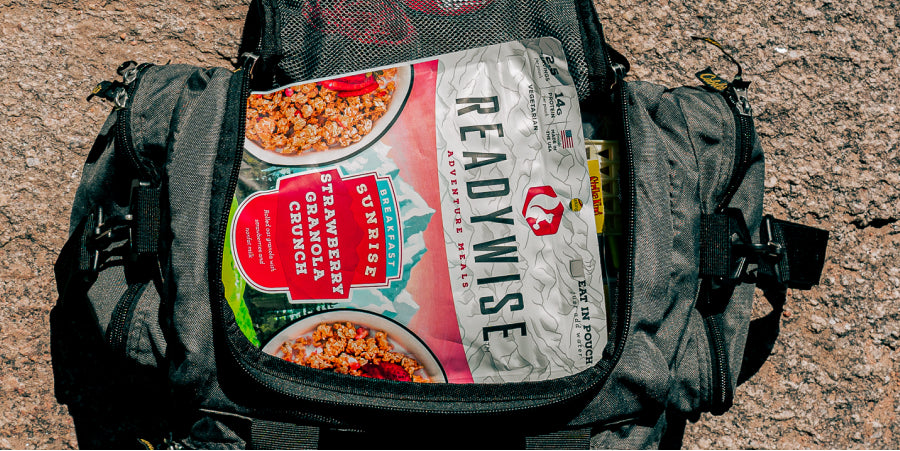Orders over $99

Your Guide to Buying a Survival Kit Backpack: What You Need, Why You Need It, & The Options Available
Whether you're hiking, camping, or backpacking, having the right gear can mean the difference between life and death in emergency situations. That's why a high-quality survival kit backpack is a must-have for any outdoor enthusiast.
At its core, a survival kit backpack is designed to provide you with the essential tools and supplies you need for a limited period. This includes food, water, shelter, and first-aid supplies, among other things.
But with so many options available on the market, how do you know which one to choose? That's where we come in. Here's everything you need to know to buy the perfect survival kit backpack.
Understanding the Purpose of a Survival Kit Backpack
Before you buy a survival kit backpack, it is important to understand its purpose. A survival kit backpack is designed to help you survive in emergency situations where access to basic necessities like food, water, shelter, and medical supplies may be limited. It should contain all the essential items you need to survive for at least 72 hours. This includes food and water, shelter, first aid supplies, communication tools, and personal protection items.
Types of Survival Kit Backpacks
There are several types of survival kit backpacks available in the market. Some of the most popular ones include:

Essential Items in a Survival Kit Backpack
Regardless of the type of survival kit backpack you choose, there are certain essential items that should be included in every kit. These include:
Factors to Consider When Buying a Survival Kit Backpack
When buying a survival kit backpack, there are several factors you should consider. These include:
Where to Buy a Survival Kit Backpack and How to Choose the Right One
Survival kit backpacks are available in a variety of stores, both online and offline. You can purchase them from outdoor stores, camping stores, or online retailers like Amazon. Make sure to read reviews and compare prices before making a purchase.
Determine Your Needs
The first step in buying a survival kit backpack is to determine your needs. What kind of outdoor activities do you plan to engage in? How long do you plan to be out in the wilderness? Do you have any specific medical conditions that require special attention? Answering these questions will help you narrow down your options and choose a backpack that's right for you.
Consider the Size and Weight
Survival kit backpacks come in different sizes and weights. The size of your backpack will depend on the number of items you need to carry. A larger backpack may be necessary if you're planning a longer trip or have more equipment to carry. However, keep in mind that a larger backpack will also be heavier and more cumbersome to carry, which can be a disadvantage if you have to move quickly or over rough terrain. On the other hand, a smaller backpack may be lighter and easier to carry, but you may not have enough space to pack everything you need.
In addition to size, consider the weight of the backpack itself. A heavy backpack can be uncomfortable and tiring to carry, especially over long distances. Look for backpacks made from lightweight, durable materials that won't add unnecessary weight.
Choose a High-Quality Backpack
Investing in a high-quality survival kit backpack is essential for your safety and comfort during outdoor activities. Look for backpacks made from durable materials like nylon or polyester that can withstand wear and tear. Reinforced stitching and waterproof materials are also beneficial.
Check the backpack's straps and padding to make sure they're comfortable and adjustable. A good backpack should distribute weight evenly across your shoulders and back, reducing the strain on your body.
Read Reviews and Compare Prices
Once you've narrowed down your options, read reviews from other outdoor enthusiasts who have used the backpacks you're considering. Look for reviews that mention the backpack's durability, comfort, and the quality of its contents.
Compare prices between different backpacks, but keep in mind that the cheapest option may not always be the best. Investing in a high-quality backpack can save you money in the long run by lasting longer and providing better protection for your supplies.
How to Pack a Survival Kit Backpack
Also, consider any special needs you may have. For example, if you have allergies or medical conditions that require specific medications, make sure the backpack includes those items or that you have enough space to pack them.
Once you have purchased a survival kit backpack, it is important to know how to pack it properly. Here are some tips for packing a survival kit backpack:
Final Thoughts
A survival kit backpack is an essential item for any outdoor enthusiast. By determining your needs, considering the size and weight, checking the contents of the backpack, choosing a high-quality backpack, and reading reviews and comparing prices, you can find the perfect backpack for your needs.
Remember to pack your backpack with care, taking into account the length of your trip, the environment you'll be in, and any special needs you may have. By staying prepared, you can enjoy your outdoor adventures with peace of mind and confidence that you're ready for anything.

